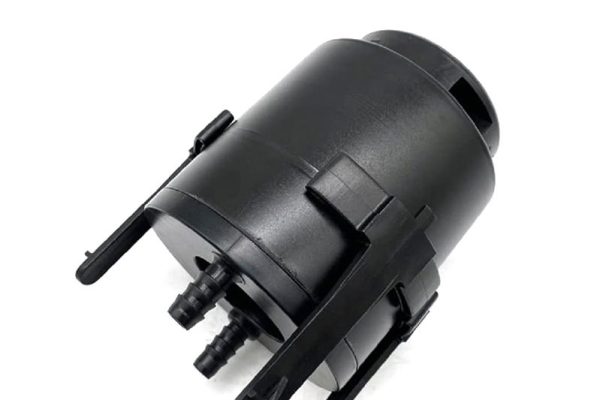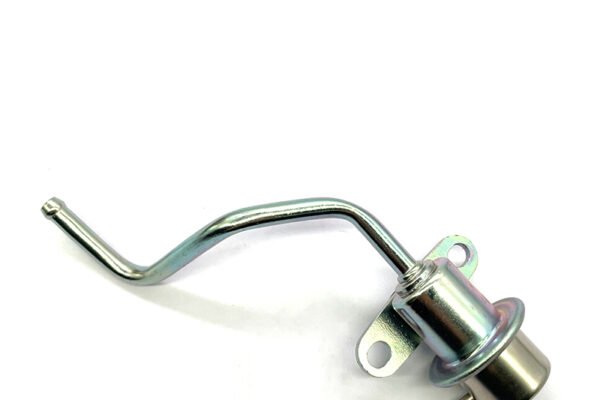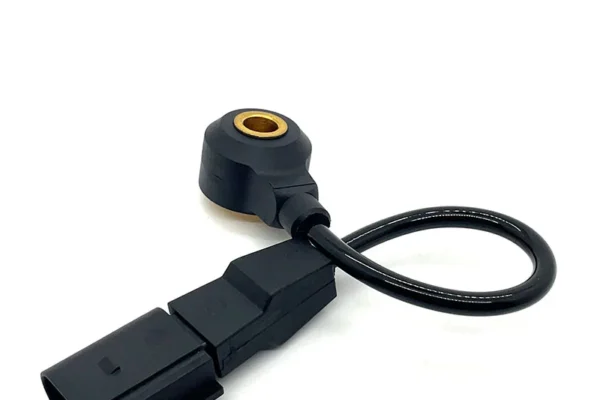In today’s automotive world, turbocharged engines are no longer a premium feature—they’re the norm. From fuel-efficient compacts to high-performance SUVs, turbochargers have become essential in meeting rising expectations for power, fuel economy, and emissions control. With environmental regulations tightening across Europe, Asia, and North America, automakers are under constant pressure to balance performance with sustainability.
But boosting engine power with forced induction is not just about slapping on a turbo. It’s a complex dance of airflow, fuel, and timing—coordinated by increasingly sophisticated engine management systems. At the center of this intricate system lies a tiny but crucial component: the turbocharger solenoid valve.
Often overlooked, the turbocharger solenoid valve plays a major role in determining how much boost pressure your engine gets, when it gets it, and how precisely it’s delivered. Without the turbo solenoid valve, modern turbo systems would either lag or break. This article dives into what turbocharger solenoid valves really do, how they work, and why B2B buyers—from parts distributors to repair shop owners—should pay close attention.
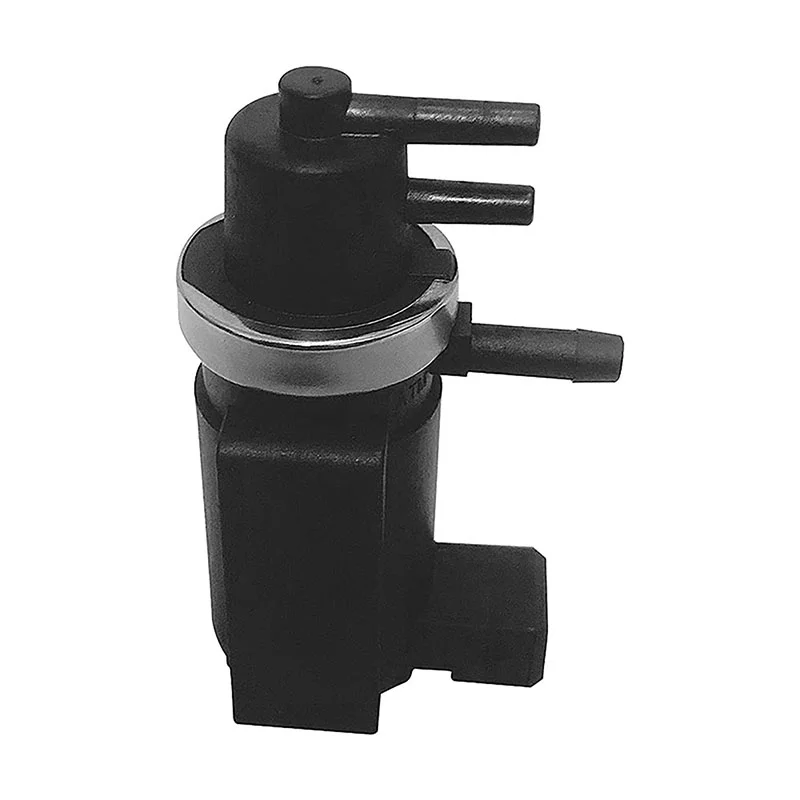
Understanding Turbocharger Solenoid Valves: A Technical Overview
So, what exactly is a turbocharger solenoid valve? In simple terms, it’s an electromechanical valve that controls the flow of air or vacuum pressure to other turbo-related components—most commonly the wastegate actuator or the variable geometry turbo (VGT) vanes. Acting under the command of the engine control unit (ECU), this valve plays a critical role in regulating boost pressure with real-time precision.
There are several types of turbo solenoids on the market. The most basic distinction is between vacuum-controlled and electronically-controlled systems. Vacuum types rely on negative pressure created in the intake manifold, while electronic ones respond directly to voltage signals from the ECU, making them faster and more precise.
Another important distinction is how they operate. Some are simple on/off solenoids, which switch between two states, while others are PWM (pulse-width modulated) types. PWM solenoids adjust the flow rate continuously based on the duty cycle of the signal—providing finer control over boost pressure.
These valves don’t work alone. They’re part of a tightly integrated turbo control system that includes the actuator, boost pressure sensor, and vacuum reservoir or pump. Each piece communicates with the ECU to ensure that the right amount of boost is delivered at exactly the right moment—whether during hard acceleration, cruising, or engine braking.
Understanding the function and variations of turbocharger solenoid valves is the first step for both technicians and B2B buyers to make informed sourcing decisions. Choosing the right valve isn’t just about fitment—it’s about ensuring consistent engine performance, fuel efficiency, and regulatory compliance.
These valves are widely used across multiple platforms, including Faw Audi and Volkswagen models such as the Beetle, Golf, Jetta, and Passat. For parts distributors or repair businesses, sourcing wholesale turbo solenoid valves for VW and Audi platforms built with durable materials like PA6.6-GF35 ensures compatibility and long service life in high-temperature environments.
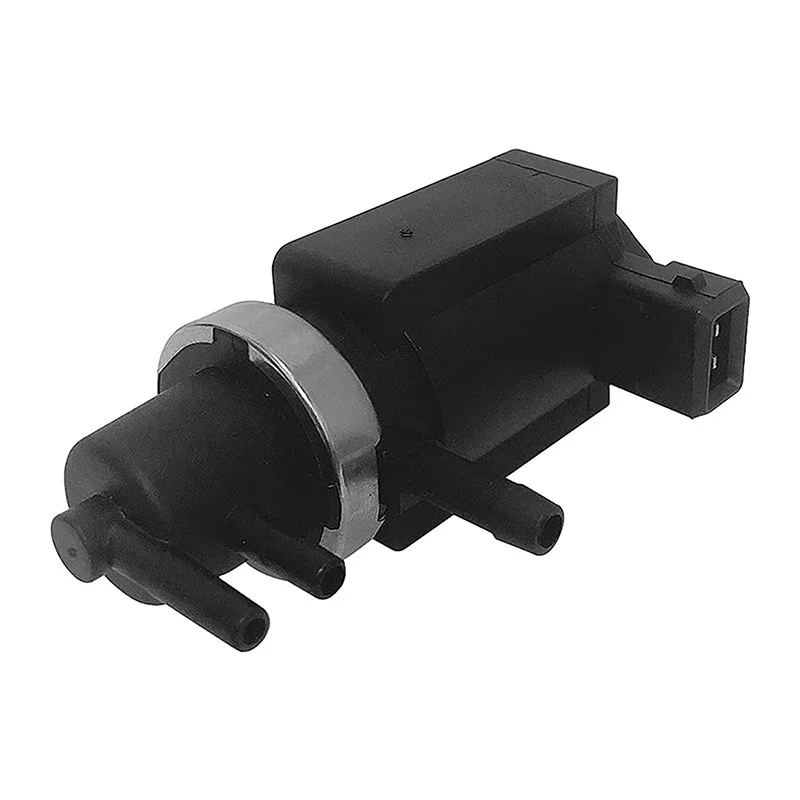
Integration in Engine Management Systems
In a modern vehicle, boost control isn’t done manually—it’s handled by the engine control unit (ECU). This powerful onboard computer calculates how much boost the engine needs based on many factors: throttle position, engine load, air temperature, and more. Then, it sends signals to the turbocharger solenoid valve to adjust the turbo output accordingly.
The solenoid valve acts like a gatekeeper. It opens or closes depending on the ECU’s instructions, which helps control either the wastegate (in traditional turbos) or the vanes in a VGT turbo. This means the engine can get more power when needed—or reduce boost to save fuel or prevent engine knock.
But the solenoid does more than just boost control. It also plays a role in other engine functions:
- In air-fuel ratio (AFR) control, it helps deliver the right amount of air, improving combustion and reducing emissions.
- For knock prevention, it keeps boost within safe levels to avoid damaging detonation.
- In eco or sport driving modes, it helps switch between fuel-saving and power-focused settings.
Different carmakers have unique ways of using turbo solenoids. For example, the Volkswagen EA888 engine uses an electronic solenoid to manage its twin-scroll turbo setup. Ford’s EcoBoost series combines the solenoid with direct injection to maximize low-end torque. Even Mercedes-Benz’s M264 engines rely on these valves for seamless turbo response and fuel economy. In all these systems, the turbo solenoid is a small but vital link. Without it, the engine wouldn’t know how to adjust boost on the fly—and drivers would feel the difference.

What Happens When It Fails: Impact on Performance & Emissions
When a turbocharger solenoid valve fails, the signs aren’t always obvious at first—but they can escalate quickly. Because this component controls how much boost reaches the engine, a malfunction can disrupt the entire performance chain.
The most common symptom is loss of power. If the solenoid sticks open or closed, the ECU can’t manage the turbo boost correctly. Drivers may notice poor acceleration, turbo lag, or an engine that feels sluggish under load.
Fuel economy often suffers too. Without accurate boost control, the air-fuel ratio becomes unbalanced, causing the ECU to adjust fuel trim incorrectly. This can result in rich or lean conditions, both of which reduce efficiency and increase emissions.
The problem also tends to trigger diagnostic trouble codes (DTCs). Common ones include:
- P0243: Turbocharger Wastegate Solenoid A Malfunction
- P0035: Turbocharger Bypass Valve Control Circuit High
- P2598 / P0045: Indicating issues with variable geometry turbo (VGT) control
When left unaddressed, a faulty turbo solenoid can cause a chain reaction of engine issues. Excessive boost can overwork the turbocharger itself, leading to bearing failure. In contrast, insufficient boost may result in poor combustion, carbon buildup, and catalytic converter damage over time.
For B2B buyers—especially those in repair, distribution, or fleet maintenance—understanding these failure signs is crucial. Supplying low-quality or incompatible valves doesn’t just lead to returns; it may also cause expensive engine repairs, lost customer trust, and warranty claims.
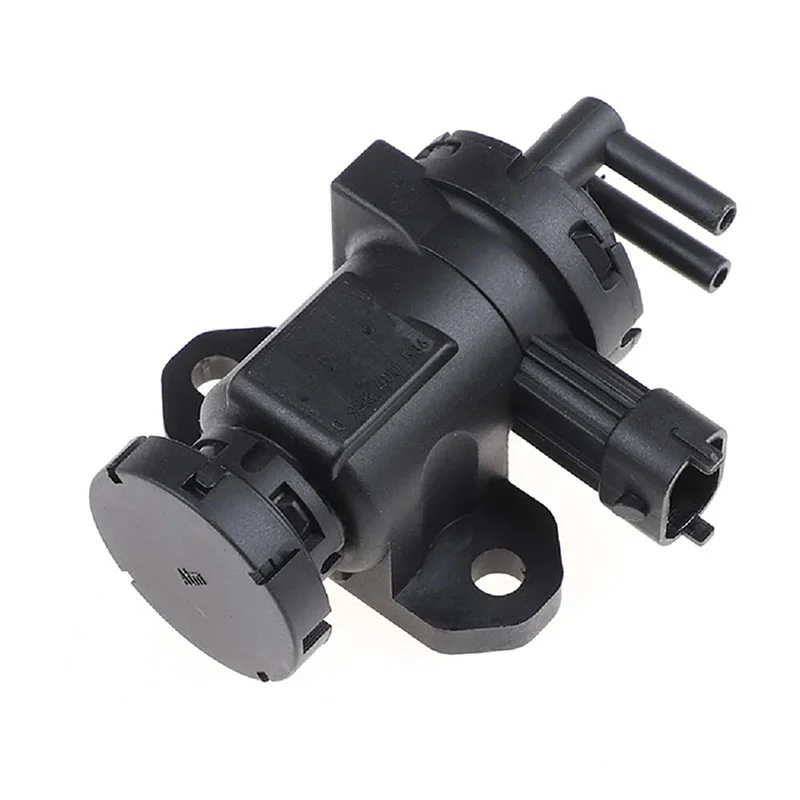
What B2B Buyers Must Know: Evaluating Aftermarket Turbocharger Solenoid Valves
1. OEM vs Aftermarket: What’s the Real Difference?
For many B2B buyers, the first decision when sourcing turbocharger solenoid valves is choosing between OEM (Original Equipment Manufacturer) and aftermarket options. On paper, both may claim to perform the same function—but in reality, the differences can be significant.
OEM valves are designed and tested by the automaker or its approved suppliers. They are built to exact vehicle specifications and are often more reliable in long-term use. However, they usually come at a higher cost and may have limited availability, especially for older or imported vehicles.
Aftermarket valves, on the other hand, offer a broader price range and more flexibility. But not all aftermarket products are created equal. Design variances, inconsistent materials, or lack of proper testing can lead to early failure or poor performance. For example, a solenoid with mismatched electrical resistance can confuse the ECU, triggering fault codes even if installed correctly.
That said, not all aftermarket brands are low-quality. Many reputable suppliers invest in independent testing, OEM-equivalent materials, and QC certifications. Some have even earned strong reputations in the repair and tuning markets, especially for performance vehicles where slight changes to valve behavior can fine-tune the driving experience. For example, for widely used diesel platforms like the Nissan Navara D40 and Pathfinder, selecting a reliable turbo solenoid valve is essential for maintaining stable boost control and long-term durability. Many wholesale turbo solenoid valves for Navara and Pathfinder are available to meet both OEM and aftermarket demands in today’s global parts market.
In short, functional similarity doesn’t always mean performance equivalence. B2B buyers should look beyond just price and focus on spec verification, test data, and customer feedback when evaluating turbo solenoid suppliers.

2. Key Performance Indicators B2B Buyers Should Check
Choosing the right turbocharger solenoid valve isn’t just about fitment—it’s about performance under pressure. For B2B buyers, especially those sourcing in bulk or supporting repair networks, understanding key performance indicators (KPIs) is essential.
(1) Response Time
This measures how quickly the solenoid reacts to ECU signals. A slow response can delay turbo spool-up, causing boost lag and poor throttle feedback. Fast-acting valves improve driving feel and engine efficiency—especially important in performance-tuned or downsized engines.
(2) Thermal Durability
Turbo solenoids operate in high-heat environments, often near exhaust manifolds or turbo housings. Materials must withstand prolonged exposure to temperatures exceeding 150°C (302°F). Valves with poor heat resistance tend to warp or crack, leading to vacuum leaks or signal errors.
(3) Electrical Resistance Stability
The valve’s coil resistance must remain within tight tolerances. A shift—due to corrosion, winding failure, or subpar materials—can confuse the ECU, causing it to trigger DTCs or enter a reduced-power mode. Always check for stable ohm readings across temperature ranges.
(4) Sealing & Leakage Rate
Especially important for vacuum-based systems, the valve must maintain pressure integrity over time. Poor sealing results in unstable boost delivery and irregular AFR (air-fuel ratio), increasing emissions and wear on the turbo.
Suppliers who can provide test reports on these metrics—either from in-house labs or certified third-party facilities—are far more trustworthy than vendors offering only spec sheets. For long-term B2B success, performance data should be part of every procurement checklist.
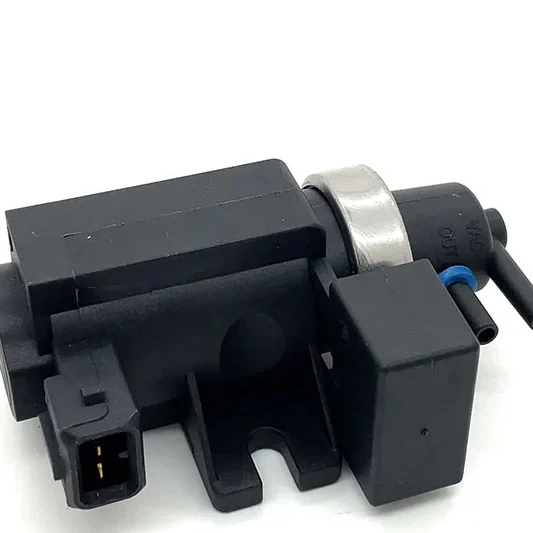
3. Critical Factors in B2B Sourcing Decisions
Beyond performance, B2B buyers must evaluate a range of logistical and strategic factors when sourcing turbocharger solenoid valves. The right supplier isn’t just about quality—it’s about operational fit and long-term value.
(1) Vehicle Fitment Range
A wider fitment compatibility means fewer SKUs to manage and lower inventory risk. Buyers should prefer valves that support multiple models or platforms, especially for popular engine families like VW EA888, Ford EcoBoost, or Toyota’s 1.2T/1.5T lines. This flexibility improves sell-through rates across regions.
(2) Certifications and Compliance
Reliable suppliers often carry ISO 9001, IATF 16949, or other relevant certifications. These prove that their manufacturing processes meet global automotive standards. For importers and distributors, these certifications can also ease customs clearance and product liability concerns.
(3) Packaging and Included Accessories
Good packaging isn’t just about looks—it protects sensitive parts during transport. A professional supplier should provide:
- Anti-static or moisture-proof pouches
- Installation instructions
- Required connectors, hoses, or gaskets (if applicable)
This reduces technician error and enhances end-user satisfaction.
(4) MOQ, Lead Time, and Technical Support
For new product lines or pilot programs, a low minimum order quantity (MOQ) is a plus. Fast lead times also matter—delays in turbo solenoid supply can stall engine repairs or delay shipments. Meanwhile, technical documentation and after-sales support help build trust and reduce return rates.
In summary, performance is only half the equation. The best B2B suppliers deliver a balance of product quality, business agility, and technical transparency—key factors in building a durable sourcing partnership.
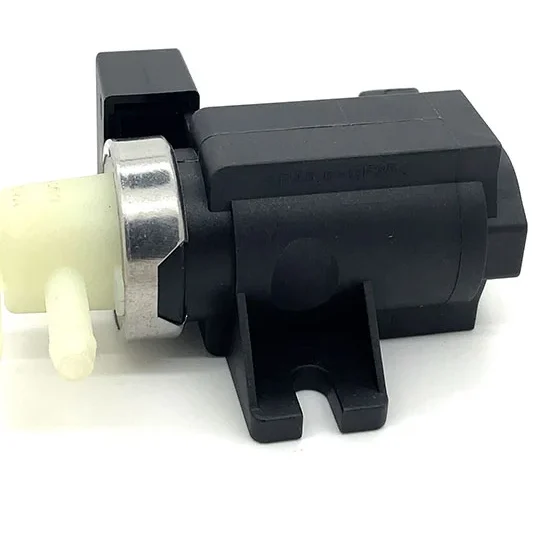
Conclusion
Turbocharger solenoid valves may be small, but their impact on engine performance, fuel economy, and emissions is anything but minor. As modern turbocharged engines become more precise and software-controlled, these valves serve as a critical link between the mechanical and digital sides of vehicle performance.
For B2B buyers—whether you’re supplying workshops, managing fleets, or exporting parts in bulk—these components deserve more attention. A high-quality solenoid valve can make the difference between a reliable engine and one plagued by performance issues, error codes, or costly warranty claims.
Looking ahead, the trend is clear: future turbocharger solenoid valves will need to be more durable, more responsive, and smarter, capable of interfacing with evolving ECUs and hybrid systems. Investing in reliable sourcing now means you’re ready for that future—and prepared to offer consistent value in a competitive aftermarket.
FAQ
Q1: What is the difference between a turbo solenoid and a wastegate actuator?
A turbo solenoid is an electronic valve that controls the airflow or vacuum sent to the wastegate actuator, which physically opens or closes the turbo’s wastegate. In short, the solenoid gives the signal; the actuator performs the action.
Q2: Can a failing turbocharger solenoid valve cause engine knocking or poor fuel economy?
Yes. If the turbocharger solenoid valve fails to regulate boost properly, the engine may run too lean or too rich, which can lead to knocking, reduced fuel efficiency, and even long-term engine damage if left unresolved.
Q3: How can I test a turbocharger solenoid valve before replacement?
You can use a multimeter to check the electrical resistance of the valve coil, or apply vacuum/pressure to check if the valve opens and closes properly when powered. Some scan tools also allow you to activate the valve via ECU command for live testing.
Q4: Are aftermarket turbo solenoid valves reliable for long-term use?
It depends on the brand and testing standards. High-quality aftermarket solenoids that follow OEM specifications and pass thermal, electrical, and sealing tests can perform just as reliably—sometimes even better in performance-tuned applications.
Q5: Do hybrid or EVs use similar boost control components?
Pure electric vehicles don’t use turbochargers, but hybrid engines with internal combustion systems do. Some advanced hybrid setups also use electric-assist turbochargers, where electronic valves like solenoids still play a role in managing airflow and energy balance.
————
Get more information about turbocharger solenoid valves:



